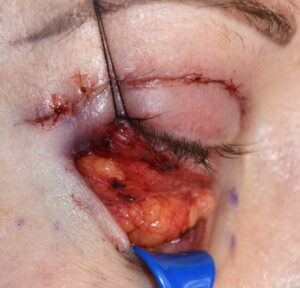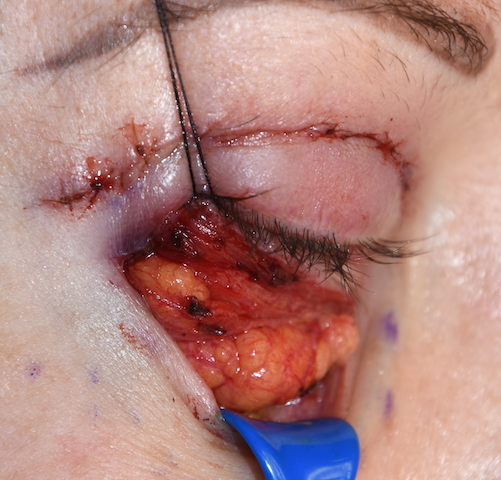Lower eyelid bags are a well recognized facial feature that is typically associated with looking tired and/or being older. Appearing as ballooned lower eyelids they are one of the easily seen of all aesthete eyelid deformities with a convex rather than a concave lower eyelid shape.

The treatment of lower eyelid bags is dependent on either removal and/or relocation of these fat pads. Whether they are totally removed or part of them relocated over the orbital rim depends on whether a significant tear trough deformity exists. While the contemporary trend has been for relocation for some of the fat this is not a technique that is applicable to everyone.
When it comes to the removal of lower eyelid fat pads this can be done either from outside (transcutaneous lower blepharoplasty) or inside of the eyelid. (transconjunctival lower blepharoplasty) There are merits for either approach and it principally depends on wether any lower eyelid skin needs to be removed as well. The transcutaneous approach allows for skin removal while the transconjuncvtival approach allows for lower eyelid skin resurfacing. (chemical peels or laser resurfacing)
While this is what makes up lower eyelid bags, the interesting question is why do they appear. While most lower eyelid bags are associated with aging, some patients have them naturally where they can even be seen in their teenage years. Much like an abdominal hernia the overlying capsulopalpebral fascia, which holds back the fat, weakens and the fat comes pushing forward. Some lower blepharoplasty techniques use a hernia repair approach by tightening/reinforcing the fascia as opposed to fat removal.
Dr. Barry Eppley
Indianapolis, Indiana



